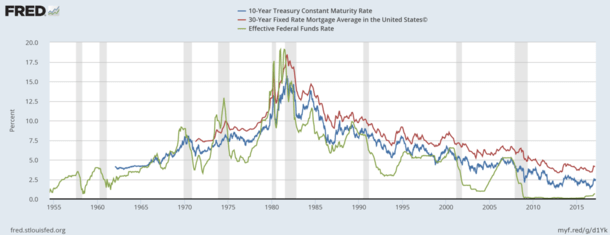File this one under “no need to panic,” despite constant warnings of a Fed move impacting mortgage rates.
You can’t blame them (the media) – it makes for a good headline, but much of what is thrown out there usually isn’t true or anything to worry about.
In most cases, it’s fear mongering, or simply something to fill the page. It tends to be a regurgitated article that comes out around the time the Fed meets, which is every six weeks throughout the year (eight times annually).
Whenever a Fed announcement comes along, you’ll start to see an uptick in articles about what mortgage rates will do when the Fed speaks, with the most common one being “rates expected to rise” or something of that nature.
Or you’ll get straight up definitive articles warning you about the impending rate rise and what you should/can do to mitigate the damage. The problem is it’s simply not accurate and these things tend to do more harm than good.
The Fed Doesn’t Announce Mortgage Rates

When the Fed gets together to set the target rate for the Federal Funds Rate, financial markets (stocks, bonds, etc.) pay attention and react. As does the media because it’s generally a big deal. But Janet Yellen and co. don’t sit down and decide which way mortgage rates will go.
Rather, they discuss the state of the broader economy, inflation, monetary policy, and so on. They almost never mention mortgages explicitly, except for at the moment thanks to the remnants of the quantitative easing program known as QE3.
Additionally, there’s no clear correlation between the Federal Funds Rate and mortgages. In other words, one can go up while the other goes down. Or one can do nothing while the other does something. Or they can move in the same direction for a while.
But the spread between the two won’t remain in a certain range over time like mortgage rates and the 10-year bond yield do. You can’t say the 30-year fixed should be X% higher or lower than the Fed Funds Rate at any given time.
As you can see from the St. Louis Fed chart above, the 10-year yield and the 30-year fixed (based on Freddie Mac data) move in relative lockstep. You can see the blue line and red line move in a very similar fashion over the years with a pretty steady spread. Then there’s the green line (Fed Funds Rate), which is all over the place.


No comments:
Post a Comment